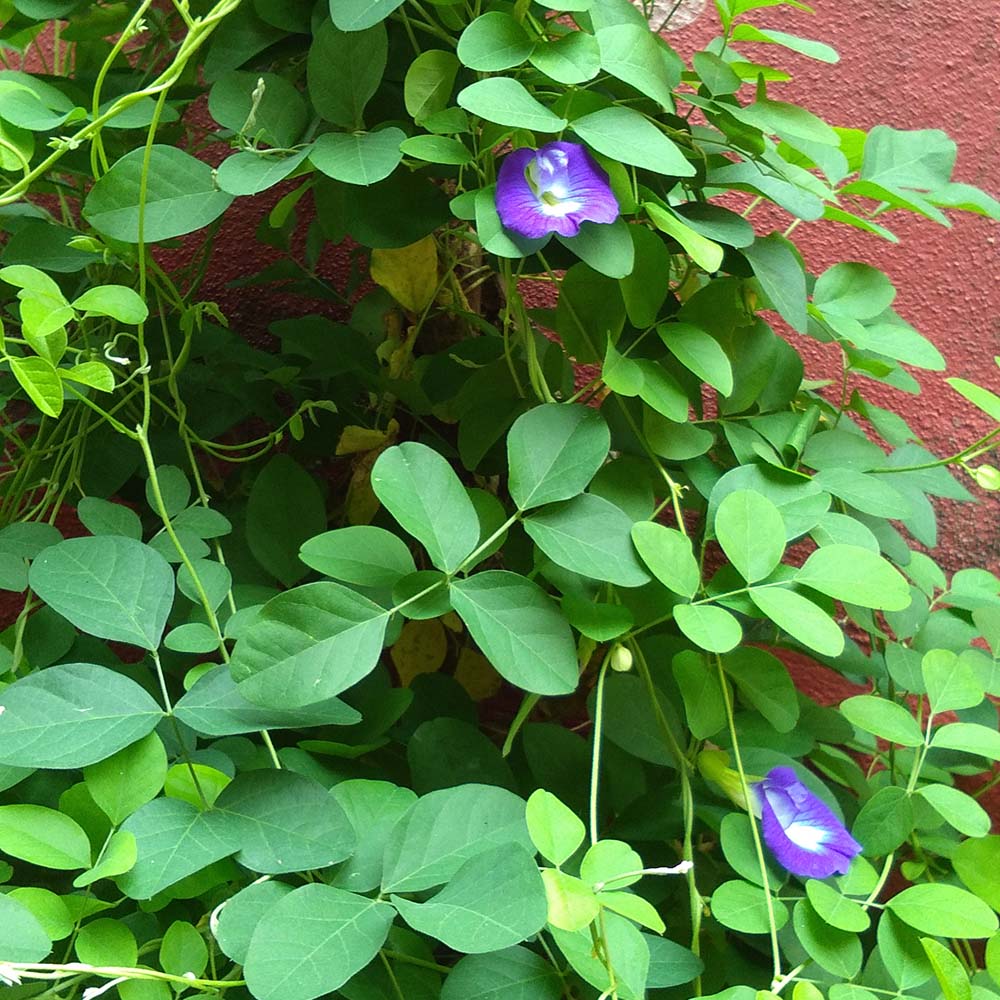The Butterfly Pea, scientifically known as Clitoria ternatea, is a captivating flowering vine that enthralls with its stunning blue blossoms and remarkable versatility. Native to tropical regions of Asia, this vine has gained popularity worldwide for its ornamental value, culinary uses, and potential health benefits. In this article, we will explore the enchanting world of the Butterfly Pea, delving into its characteristics, cultivation, culinary applications, and traditional uses.
Section 1: Characteristics and Appearance
- Striking Blue Flowers: The Butterfly Pea boasts exquisite flowers in shades of vibrant blue, ranging from deep indigo to sky blue. Each flower exhibits a distinct butterfly-like shape, featuring delicate petals and a central tube. The mesmerizing coloration and intricate design make it a true visual delight.
- Climbing Vine: As a climbing vine, the Butterfly Pea gracefully twines and trails, making it an ideal choice for adding vertical interest to gardens, arbors, trellises, or fences. Its verdant green leaves provide an attractive backdrop to the dazzling blooms.
Section 2: Cultivation and Care
- Sun and Soil Requirements: The Butterfly Pea thrives in full sun to partial shade, benefiting from at least six hours of direct sunlight per day. It adapts well to various soil types, but well-draining soil with moderate fertility is recommended for optimal growth.
- Watering and Maintenance: Adequate watering is essential during the plant’s establishment phase. Once established, the Butterfly Pea has moderate water needs and can withstand periods of drought. Pruning can be done to maintain desired size and shape.
Section 3: Culinary and Beverage Applications
- Natural Food Coloring: Butterfly Pea flowers are known for their vivid blue color, which can be extracted and used as a natural food coloring agent. The vibrant blue hue adds an eye-catching element to a variety of culinary creations, such as desserts, beverages, and rice dishes.
- Butterfly Pea Tea: The flowers of the Butterfly Pea are often steeped to make a stunning blue-hued tea. The tea can be enjoyed on its own or used as a base for various herbal infusions, cocktails, or refreshing iced beverages. When combined with acidic ingredients like lemon or lime, the tea transforms into a vibrant purple shade.
Section 4: Traditional and Medicinal Uses
- Traditional Remedies: In traditional medicine systems, the Butterfly Pea has been used for various purposes. It is believed to possess antioxidant properties and has been used to support overall well-being, promote healthy skin, and improve cognitive function.
- Ayurvedic and Traditional Thai Cuisine: Butterfly Pea flowers are integral to Ayurvedic and traditional Thai cuisines. They are often used in rice dishes, desserts, and beverages for their unique flavor and natural coloring.
Conclusion: The Butterfly Pea vine, with its alluring blue blossoms and versatile applications, adds a touch of enchantment to gardens, culinary creations, and traditional remedies. Whether adorning trellises or steeping into vibrant teas, the Butterfly Pea captivates with its vibrant colors and cultural significance. As gardeners explore its cultivation, culinary enthusiasts embrace its natural food coloring properties, and traditional medicine enthusiasts appreciate its potential health benefits, the Butterfly Pea continues to mesmerize with its versatile charm and captivating beauty.
